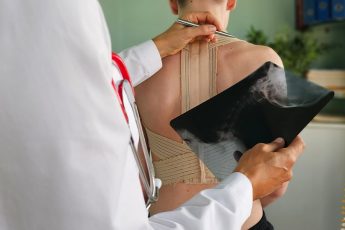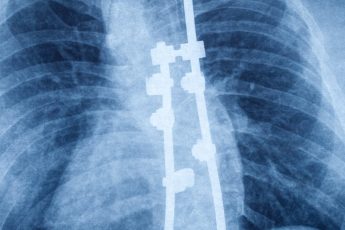
Why Spine Deformity Happens and How Early Diagnosis Can Help
The human spine is a truly marvellous piece of anatomy—strong, resilient, and able to bear our entire body. But when something goes wrong with its formation or alignment, the results can be severely debilitating and painful. Spinal deformities are more common than most people realise, and while they might be mild or severe, early detection is key to managing symptoms and preventing long-term damage.
Let’s explore further how Spine deformity happens and how early diagnosis may be the key to successful treatment and quality of life.
What Is a Spine Deformity?
A spine deformity is an abnormal curvature or alignment of the spine. The most common types are:
- Scoliosis: abnormal curvature of the spine to one side, typically in children or teens.
- Kyphosis: abnormal forward rounding of the upper back.
- Lordosis: inward abnormal curvature of the lower spine.
These deformities can result from several causes, and while some are benign, others can cause chronic pain, restricted motion, and even respiratory or cardiac issues in severe cases.
Why Do Spine Deformities Form?
There is no one reason that causes deformities of the spine. They tend to develop due to interaction between genetic, structural, or environmental factors. Here are some general causes:
Congenital Factors:
Certain back pains are caused by deformities present at birth. Congenital scoliosis, for instance, occurs when the back does not form properly in the womb. It can range from mild to severe and worsen as a developing child grows.
Neuromuscular Conditions:
Some conditions, such as cerebral palsy, muscular dystrophy, or spina bifida, can result in extreme muscle imbalance or weakness, which results in abnormal curvature of the spine. Such conditions are referred to as neuromuscular scoliosis or deformities.
Degenerative Diseases:
With advancing age, the spine gradually deteriorates. Certain conditions, such as osteoporosis or degenerative disc disease, can result in deformities like kyphosis, which is prevalent in older individuals.
Idiopathic Causes:
In most teen cases, particularly scoliosis, the reason is unclear. It’s referred to as idiopathic scoliosis, and although it’s the most prevalent form, scientists are currently researching its cause.
Poor Posture or Trauma:
Although less common, chronic poor posture or trauma (such as a motor vehicle accident or sports injury) can lead to alteration of spinal curvature. These are not true deformities at first, but may lead to structural imbalances over time.
The Role of Early Diagnosis:
One of the most critical parts of treating spine deformities is catching them early on. Here’s why early diagnosis is crucial:
Prevents Progression:
Most spine deformities—particularly scoliosis in children—worsen with growth. Detecting the issue early makes it possible for some interventions such as bracing or physical therapy to halt or retard the curve from further exacerbation.
Enhances Quality of Life:
Unrecognized spine deformities may result in chronic pain, weakness, and diminished mobility. People who get early treatment will be more likely to maintain a normal lifestyle and avoid complications resulting from untreated deformity.
Increases Options for Treatment:
If detected early, non-surgical therapies can generally be effective. Once deformity has set in, surgery might be the sole option remaining. Early detection leaves more options open to patients and doctors to choose the best treatment.
Aids Healthy Development:
Spine deformities in children can inhibit growth and development. Spinal health checks while the child is at a critical stage of growth, like puberty, can help ensure healthy child growth and ongoing activity.
Signs to Watch For:
Early detection of spine issues most times starts from observing body changes. Parents, educators, and caregivers must be observant and look out for
Asymmetry of the shoulders or hips:
- Pointy shoulder blades on one side are greater than on the other
- The head no longer sits straight over the body
- Leaning to one side
- Visible curve of the spine
- Pain is not always a sign, particularly in children, so visual indicators are likely to pick up on something. If anything seems off, a specialist is worth consulting.
Diagnostic Tools:
A spine expert will employ all kinds of equipment to determine the health of the spine. These include:
- Physical tests to search for posture and motion
- X-rays to examine the curve and alignment of the spine
- MRI or CT scans to determine whether there is something underlying that is adversely affecting nerves or tissues
- Once a diagnosis is made, treatment can then begin—anything from observation and exercise to bracing or surgical alignment, depending on the severity.
Take Action Early:
Spinal wellness is not a luxury or something to be delayed. As a parent concerned with your child’s posture, as an adult bothered by back pain, seeking professional assistance early can prevent years of back pain or disability.
Conclusion
If you or your loved one is showing signs of a spinal deformity or you would like to guarantee spinal health, Adam Vital Hospital stands prepared to help. At the Scoliosis Center of Excellence at Adam Vital Hospital, our staff of dedicated spine specialists combines leading-edge diagnostic technology with compassionate care to identify problems early and create personalized treatment plans. Delay no more—call Adam Vital Hospital and start down the road to a healthier spine and better quality of life.



